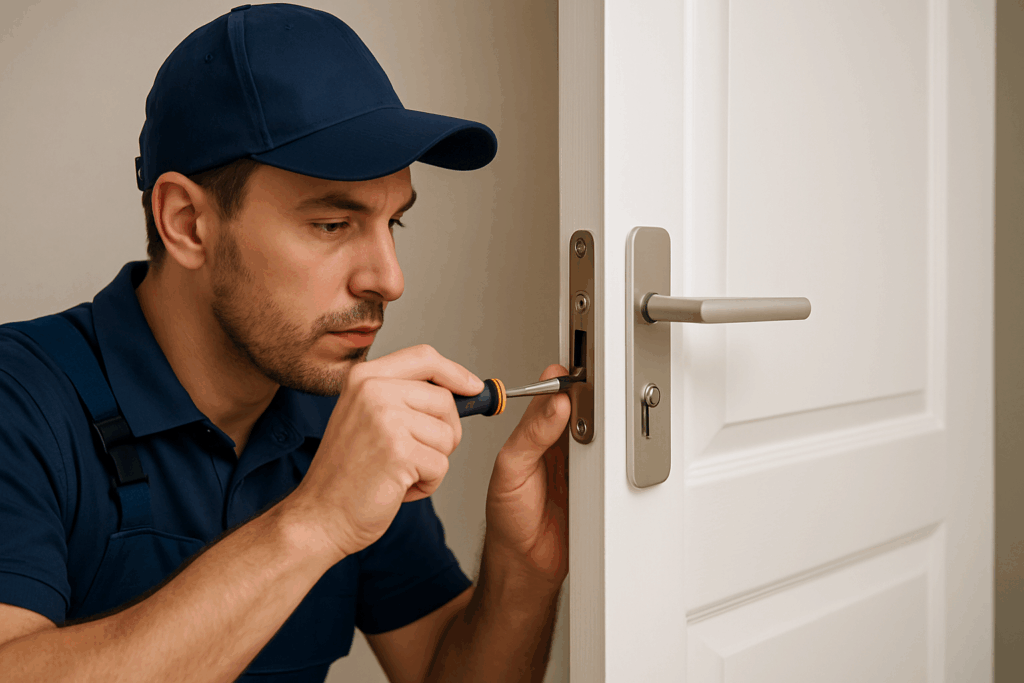Tips for Childproofing Doors and Cabinets
Creating a safe home environment for children starts with preventing access to potentially dangerous areas. Doors and cabinets are common points of curiosity for kids, but with thoughtful childproofing strategies, you can greatly reduce risks. From simple latches to advanced locking mechanisms, there are many ways to keep your little ones safe without sacrificing everyday convenience.
Why Childproofing Matters
Children are naturally curious. This curiosity drives learning, but it can also lead them into unsafe situations. Doors can open to stairways, exterior areas, or rooms containing hazardous tools and chemicals. Cabinets often store cleaning supplies, medications, sharp objects, or small items that can be choking hazards. Without proper safeguards, these everyday household features can pose real dangers.
Childproofing doors and cabinets is about more than just buying locks—it’s about assessing your home from a child’s perspective, anticipating potential hazards, and implementing a layered approach to safety. Whether you’re preparing for a newborn, toddler, or an active preschooler, the strategies you choose should match your child’s age, abilities, and tendencies.
Key Strategies for Childproofing
From mechanical locks to behavior-based measures, childproofing should be a blend of prevention and supervision. Here’s how to protect your doors and cabinets effectively.
Install Safety Latches
Magnetic, spring-loaded, or adhesive safety latches prevent cabinets and drawers from opening fully. These are ideal for kitchen and bathroom cabinets containing hazardous substances.
Use Door Knob Covers
Plastic covers that spin freely around the knob prevent small hands from gripping and turning it. They’re affordable, easy to install, and useful for both interior and exterior doors.
Add Top-Mounted Locks
Placing locks out of a child’s reach—on the top of doors or cabinets—reduces the chance of tampering. These are especially effective for pantry or cleaning supply storage.
Consider Lever Handle Locks
Lever handles are easier for toddlers to operate than knobs. Lever-specific locks encase the handle or require a two-step action to open, adding an extra layer of difficulty.
Secure Sliding Doors
For sliding glass doors leading outside, use bar locks, foot locks, or track stoppers. These prevent both accidents and unsupervised exits.
Anchor Freestanding Cabinets
Prevent tip-overs by securing tall, heavy cabinets to the wall. This is especially important in play areas where children might climb.
Use Child-Resistant Hinges
For folding doors or specialty cabinetry, hinges with built-in resistance make it harder for children to swing them open quickly.
Install Auto-Closing Hinges
Auto-closing hinges ensure doors return to the closed position, reducing the window of opportunity for a child to slip through.
Practical Solutions for Real Homes
Even the best-intentioned safety measures can fall short if not implemented correctly. Here’s how to address common childproofing challenges.
Lock Fatigue
Parents may disable locks out of inconvenience. Solution: Choose products that are quick for adults to operate but still effective for children.
Adhesive Failure
Adhesive-mounted latches can lose grip over time, especially in humid areas. Solution: Clean surfaces thoroughly before installation and replace worn adhesives promptly.
Lost Keys for Locks
Keep spare keys in a consistent, hidden location. Consider combination or magnetic key holders mounted out of reach.
Child Adaptation
As children grow, they may learn to bypass certain locks. Regularly reassess your setup and upgrade to more advanced mechanisms as needed.
Beyond Locks and Latches
True childproofing combines physical barriers with good habits and supervision. Consider these additional steps for enhanced safety.
Relocate Hazardous Items
Store dangerous substances in high cabinets or locked containers, even if the cabinet itself has a latch.
Regularly Inspect Hardware
Check locks, latches, and hinges for wear, ensuring they continue to function as intended.
Use Door Stops
Door stops prevent little fingers from getting pinched and also discourage slamming.
Educate as They Grow
Teach children about boundaries and safety rules to complement physical safeguards.
Why Work With a Locksmith or Safety Specialist
While many childproofing devices are DIY-friendly, a professional locksmith or safety consultant can assess your home comprehensively, identify hidden risks, and install hardware securely. This ensures the devices work effectively and last longer.
Custom Solutions
Tailored hardware for unique doors and cabinetry that standard products may not fit.
Secure Installation
Proper mounting for durability, especially in high-use or high-humidity areas.
Peace of Mind
Knowing your home has been childproofed to a professional standard.
Ongoing Support
Guidance on upgrades as your child grows and your needs change.
Ready to Make Your Home Safer?
Protect your children from preventable accidents by securing your doors and cabinets today. Whether you prefer a DIY approach with our recommended products or want a professional installation, the important thing is to start now.

